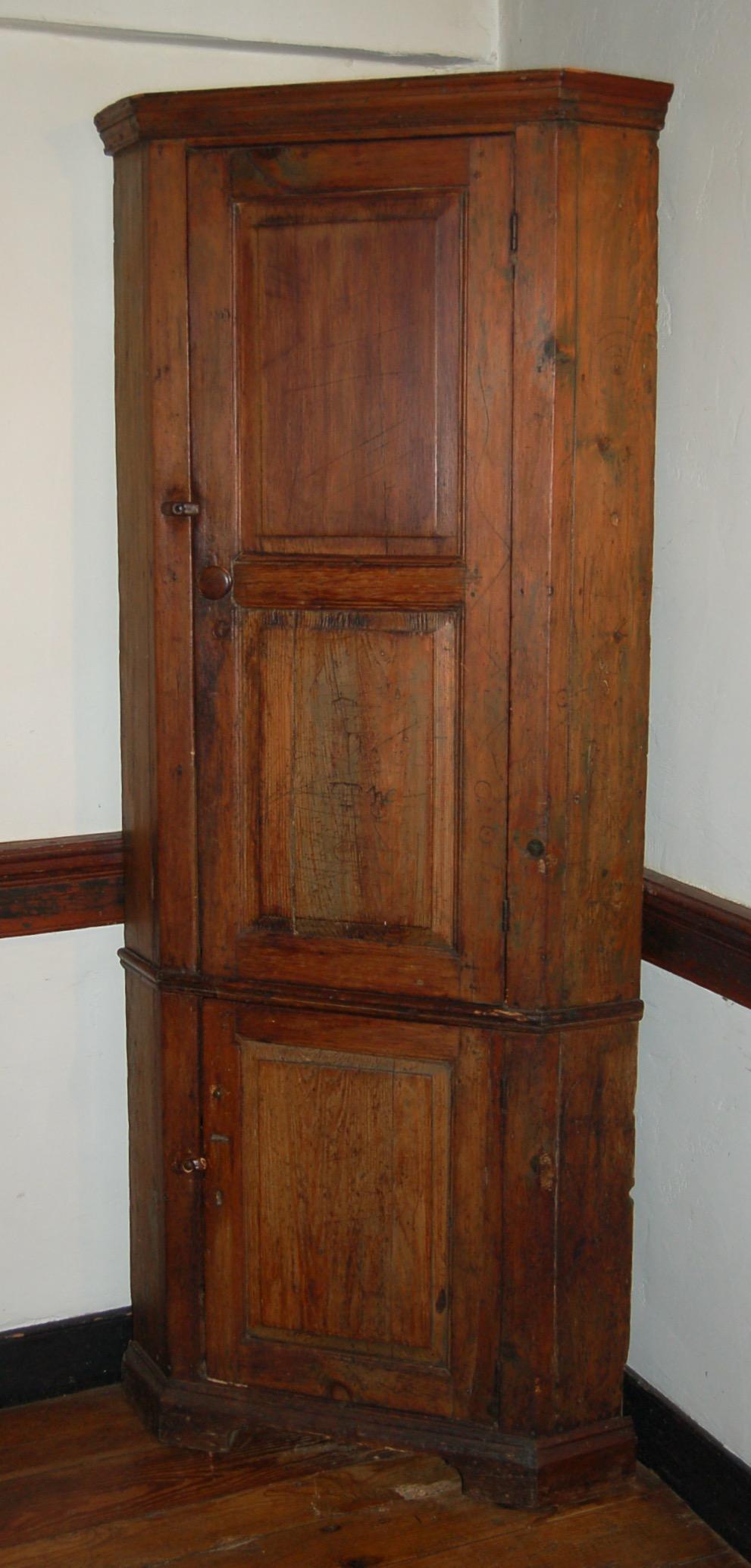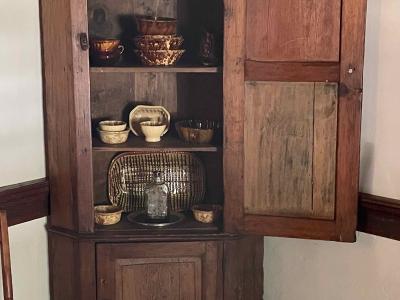Corner cupboard
Mid-Atlantic region
1820-1850
Measurements
78-3/4 in x 33 in x 17-1/4 in
Materials
White pine
Credit Line
Historic Odessa Foundation
Accession Number
1977.540
Inscription
Initials (a prominent "T" and "W"? on the middle panel) and other graffiti has been carved into and penciled onto the exterior.
Condition Notes
The upper panel of the upper cupboard door is a replacement. It is a slightly different color and does not display remnants of paint as is evidence on all of the other major parts of the cupboard. The outside surface of the panel has been distressed. The lower right base board is a replacement. Small pieces of molding in the cornice and waist moldings have been replaced. The knob of the upper cupboard door is a replacement as is the brass pull of the lower door. The cupboard has been stripped of earlier finishes inside and out. See “Comment” for additional condition details.
Provenance
The cupboard was assigned an accession number in 1977, but no provenance or other details were provided at that time. It may have originated among David Wilson Mansion collections, the H. Rodney Sharp collection, or other.
Comments
The one-piece corner cupboard is of an architectonic style that changed little for over one hundred years. It is made with two compartments, each accessed by a door with fielded panels. The cast-iron hinges that hold the two cupboard doors in place appear to be original. They, along with nail heads visible in the back boards, suggest the time of manufacture. The upper cupboard has three fixed shelves above the waist shelf. Each shelf has grooves cut to allow plates to stand against the inside walls. The lower cupboard has no shelves, although evidence indicates it once had a shelf about 7 inches below the waist board. The lower door carries two locks. The upper one is a box lock that is cut into the door stile; it looks earlier and appears to be original. Presumably after its key was lost, a second, cast-iron box lock was screwed below it onto the inside of the stile, and a new keyhole was cut through the door. The swivel catch for this door is not original, such a catch being unnecessary because of the lock. The swivel catch for the upper door, however, appears to be original. Scraps of paper remain pasted to the cupboard insides at each side of the door openings, suggesting that at one time the cupboard interior was decorated with wallpaper, which was removed.

